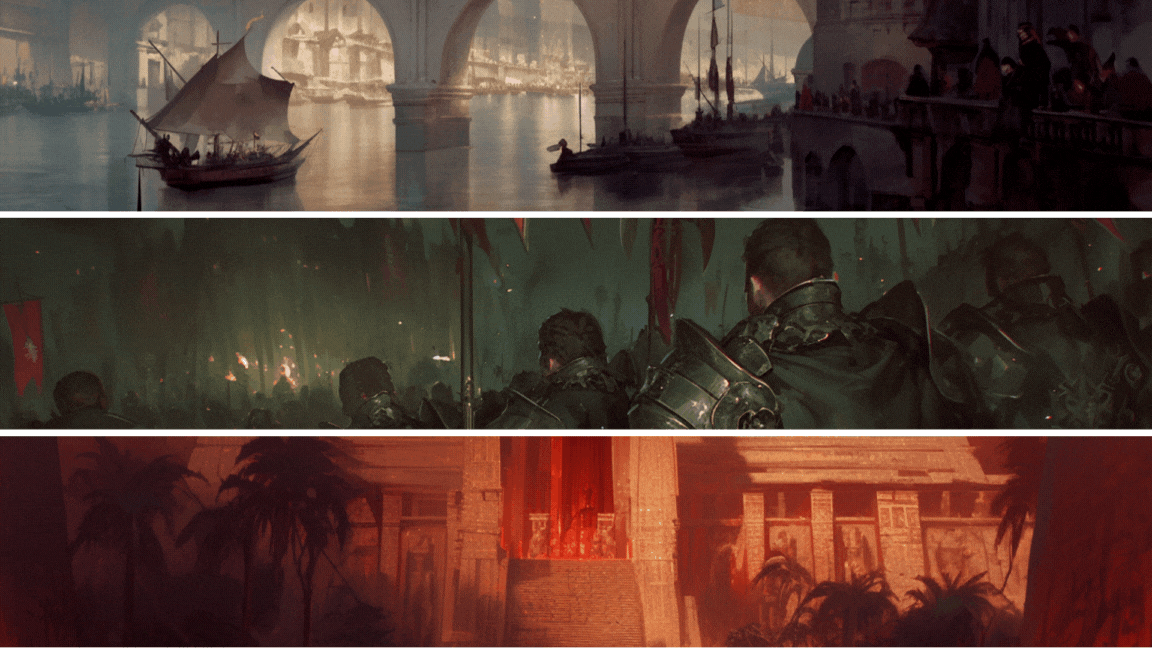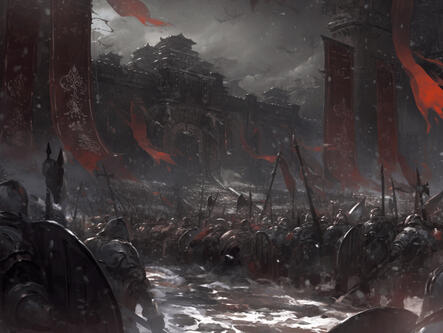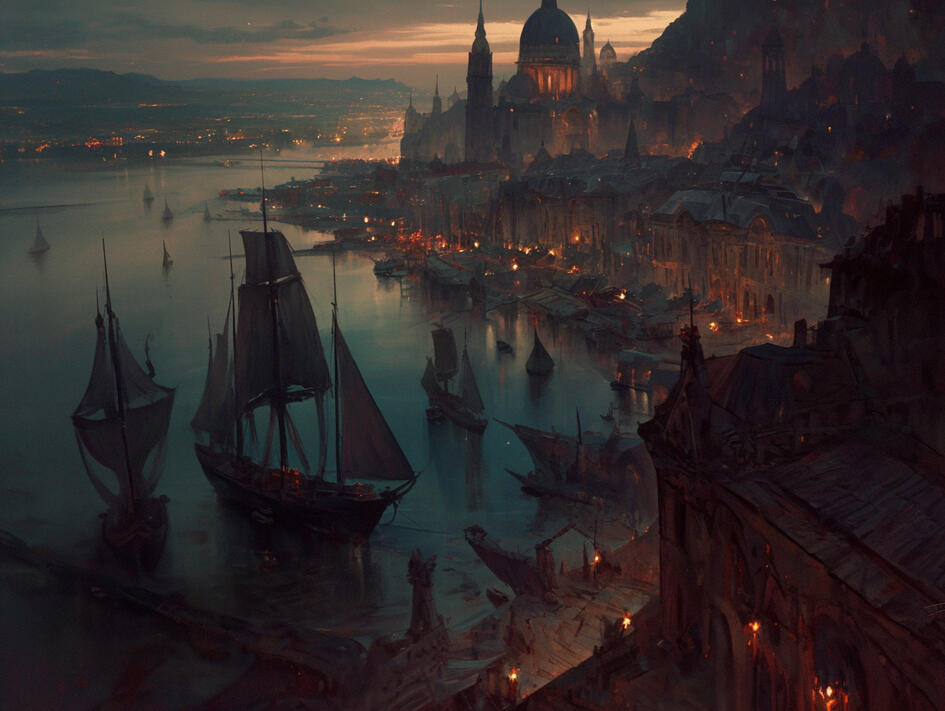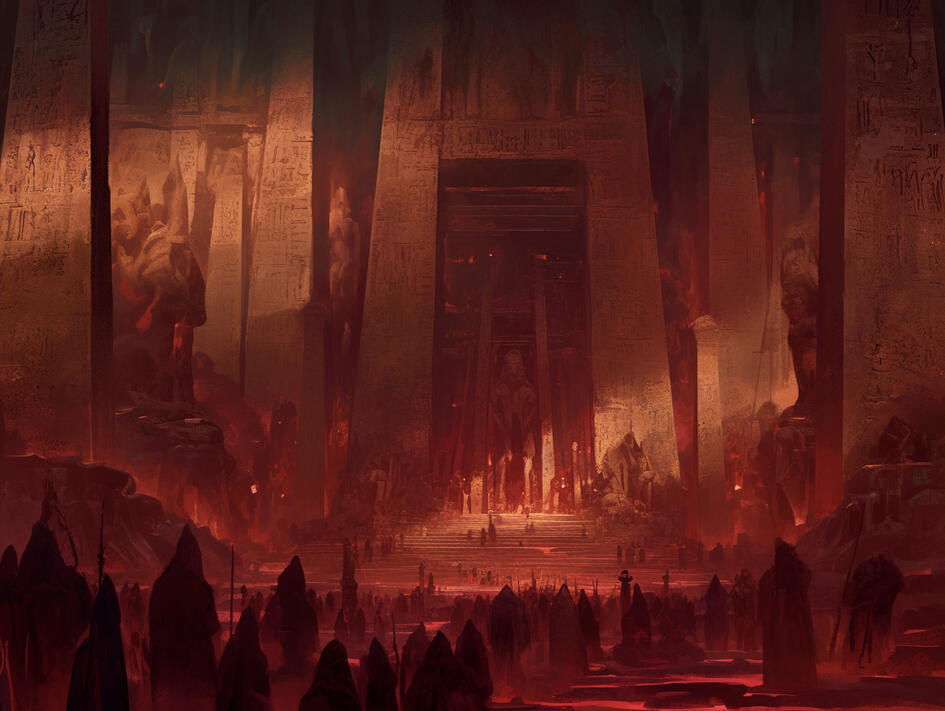Kingdom Lore.
Memory was only the beginning.
This is where the fragments took root.

KINGDOM OF AVERLEIGH

Vernharrow, the capital of Averleigh, is a city carved by cold and ruled by caution. Nestled between frozen highlands and wind-swept river valleys, it is partially encircled by the glacial waters of the Velvryn River, a natural line of both trade and defense.Towering above the city lies Crown Heights, the seat of power where the royal palace—Fort Lysenthar—and noble manors are built from dark stone and iron frost.
Below, in the crumbling districts of the Hollow Wards, live the common folk, and beneath even that, hidden in the city's bones, stretch the Veins—a labyrinth of forgotten tunnels, shrines, and ruins where the orphans and castoffs of society scrape out survival.Averleigh’s seasons shape its soul. Winter, which dominates most of the year, brings burning peat and blackwood, widespread rationing, and slowed trade sustained only by ice caravans and river barges. Spring is short and strategic, the time for planting, political maneuvering, duels, and highborn marriages. Summer, little more than a fevered month, bursts with parades, royal decrees, and carnival-like military displays before vanishing again into cold. Autumn, somber and spectral, is known as the “Season of Mourning,” when masked processions honor the dead from generations of war.The kingdom’s rigid social hierarchy mirrors its harsh climate. At the top sits King Hendrick Burnett, whose court is filled with wary clerks and sycophants too terrified of scandal to speak boldly. Beneath the throne, the Noble Houses—Sinclair, Kingsley, Seymour, and Merrowind—vie for influence, often through military power or manipulation. Below them stands the Guilded Class, made up of artisans, doctors, engineers, and scribes, many of whom once found patronage under the now-fallen House Seymour. The commonfolk, mostly laborers, soldiers’ families, and craftsmen, reside in districts like Foghill and the Hollow Wards, raised to fear disgrace more than hunger. At the bottom dwell the outcasts and orphans, who inhabit the Veins—children of scandal, political purges, or lost wars, living amid forgotten altars and underground passages.Daily life in Vernharrow is steeped in endurance and grim utility. For many boys born in the Hollow Wards, military service offers the only hope of rising from poverty. Others find work as blacksmiths, tanners, tailors of uniforms, or scribes within the towering Hall of Archives, a once-prestigious institution largely gutted after Seymour’s fall. Meanwhile, the district of Foghill—a fog-drenched, broken quarter—acts as the city’s reluctant answer to joy, housing mask-makers, mournful performers, and shadowed entertainers who help the people forget the cold, if only for a moment.
KINGDOM OF MARINTH

Delmira, the coastal jewel of Marinth, is a capital where the sea writes the laws and the wind carries stories from every corner of the world. Cradled on three sides by ocean, the city glitters with coral shoals, silvered beaches, and deep harbors that never freeze.
Inland, its terrain shifts into lush mangrove forests and freshwater deltas, rich with life and trade. At its highest point rises the Spire of Tideglass, a shimmering lighthouse of crystal and shellstone that can be seen for miles—a beacon not just for ships, but for the soul of the city itself. The air here is always rich with salt, spice, and the warm memory of passing storms.Unlike the frozen stone of Averleigh, Delmira breathes through its seasons. Winter is the calmest—soft, humid, and serene. Many citizens retreat inland or embark on seaborne pilgrimages to the Temple of Selathi, goddess of the sea. Spring brings an eruption of color: the markets overflow with goods from every continent, and music spills from balconies and alleyways. Summer is the heartbeat of the kingdom—foreign fleets flood the harbors, trade reaches its zenith, and the sea becomes a stage for naval games, sea duels, and ship-blessing rituals. Autumn, called the Tidefall, marks hurricane season. Sailors invoke ancient rites, ships are blessed with salt and kelp, and the city honors the drowned with thousands of glowing lanterns that drift across the black water.Marinth’s society flows like its tide—structured, but always in motion. At the top sits Queen Aesara, enthroned on the Coral Throne, a monarch said to descend from sea-bound bloodlines and blessed with visions granted by ocean spirits. Beneath her rise the powerful Merchant Houses—families like House Whiston—who command fleets, fund expeditions, and entertain dignitaries from across the seas. Below them are the Free Citizens: craftsmen, navigators, herbalists, and scholars—many of whom are freed slaves or descendants of travelers. Skill and trade grant them rare mobility.
Foreigners and travelers are treated with respect, given protected status, and welcomed as part of the city’s identity, though they may not own land. At the edges of Delmiran society exist the Drifters—sailors with no house or home, pirates in hiding, or children born adrift on the ocean. They are at once feared and romanticized, whispered of in taverns and sung of in ballads.Work in Delmira is both sacred and sea-bound. The Azure Docks thrum with shipwrights and pearl-divers. The Verdant Bazaar blossoms with spice merchants, coral carvers, and performers. And in the vaulted Archive Halls, one can find cartographers, translators, and sea-priests tending to forgotten maps and dead tongues. Life here is movement—anchored not by walls, but by salt, spirit, and story.
KINGDOM OF XALJIRA

The capital of Xaljira is Nasirae, a city carved from stone and silence, known to outsiders as the Silent Spire. It sits atop a scorched plateau where jagged obsidian cliffs fall into sunburnt ravines, and the very air hums with dry heat and divine judgment.
Dust storms sweep through its narrow causeways, and the scent of ash, incense, and cold metal lingers even when the wind dies. Towering temples of black stone rise like grave markers above the city, their spires etched with divine symbols and silver filigree that catch the sun like blades. Beneath this sacred city sprawls The Shroud, a shadowed network of crypts, catacombs, and forbidden sanctuaries. Here, whispers carry farther than footsteps.Xaljira has no monarchy. Instead, the entire realm is governed by a rigid theocracy led by High Priest Abraham Ashbourne, known as The Venerated. Cold, prophetic, and absolute, Abraham claims to speak the will of the divine through dreams and visions. The ruling body—the Clergy of the Inner Eye—is composed of Diviners, Chroniclers, and Voidscribes, each sworn to uphold silence, order, and sacred memory. The faithful are not promised joy, but purpose.
Life in Xaljira is a long offering: of obedience, of suffering, and of the self.The seasons in Xaljira are marked not by weather, but by ritual. Winter is a time of fasting and penance, when the nights stretch long and wind bites deep. Spring, called the Awakening, sees a surge of religious ceremonies; initiates are taken into the temple orders, and the streets echo with prophetic chants. Summer brings brutal heat and public reckoning—sacred duels, executions, and trials are performed beneath the noonday sun, each a spectacle of divine justice. Autumn, known as the Veiling, is the most feared. It is the season of silence, when priests wear masks and the city turns inward. It is believed the veil between the divine and the living thins, and whispers of disappearances rise with the dusk.Social class in Xaljira is determined not by bloodline, but by proximity to sanctity. At the pinnacle stands the High Temple, ruled by Abraham Ashbourne. Beneath it are the Sanctified Orders—priests, inquisitors, soulbinders, and assassins like Ezekir and Morgana, orphans raised within the temple walls to serve as vessels of judgment. Below them are the Marked Citizens, loyal scribes, architects, and soldiers branded through rites of purification. The Silent Castes—common laborers, weavers, and farmers—are expected to serve and obey, barred from reading sacred texts or speaking above a whisper in holy zones. At the bottom are The Forsaken: heretics, traitors, or the mentally unwell, often sent to the Wailing Dens or sacrificed in the blood-stained trials of the Veiling.Daily life in Xaljira is a solemn affair. In the Ivory Kilns, artisans forge temple blades using bone-tempered steel. The Obsidian Halls echo with the scratching of scribes, copying laws and confessions by candlelight. The Shroud below hosts orphans and failed novices, made to prepare bodies for burial, grind ash into sacred ink, or labor in silence under the gaze of stone angels. Soul-markers etch prophetic warnings into flesh, and some desperate souls offer themselves for the Red Harvests, ritual sacrifices said to cleanse generations of sin.To outsiders, Xaljira is a land of fear and fanaticism—an enemy cloaked in ritual and blood. But to its people, faith is not a comfort. It is law. In the eyes of the divine, there is no chaos—only the order that comes after ruin.